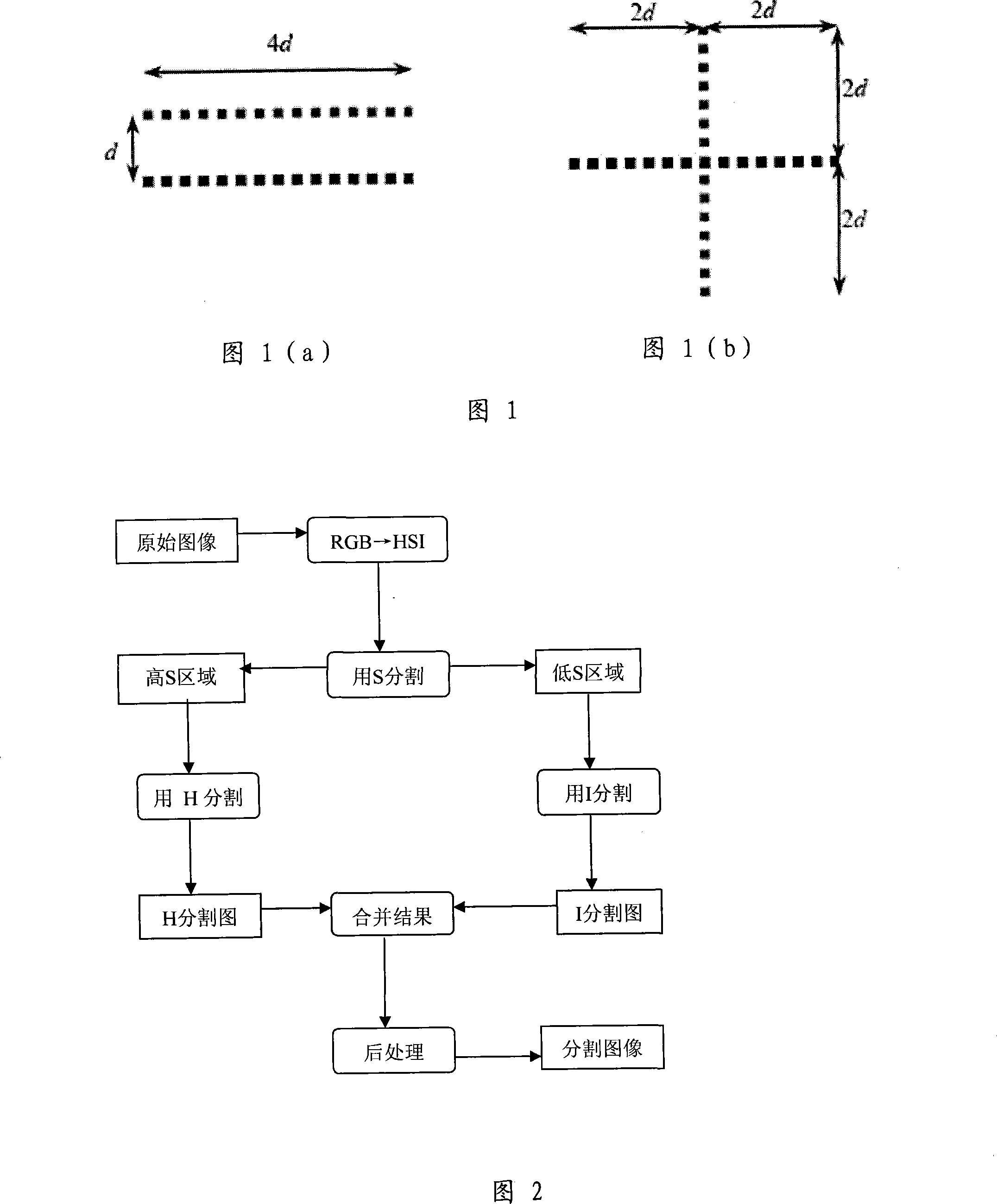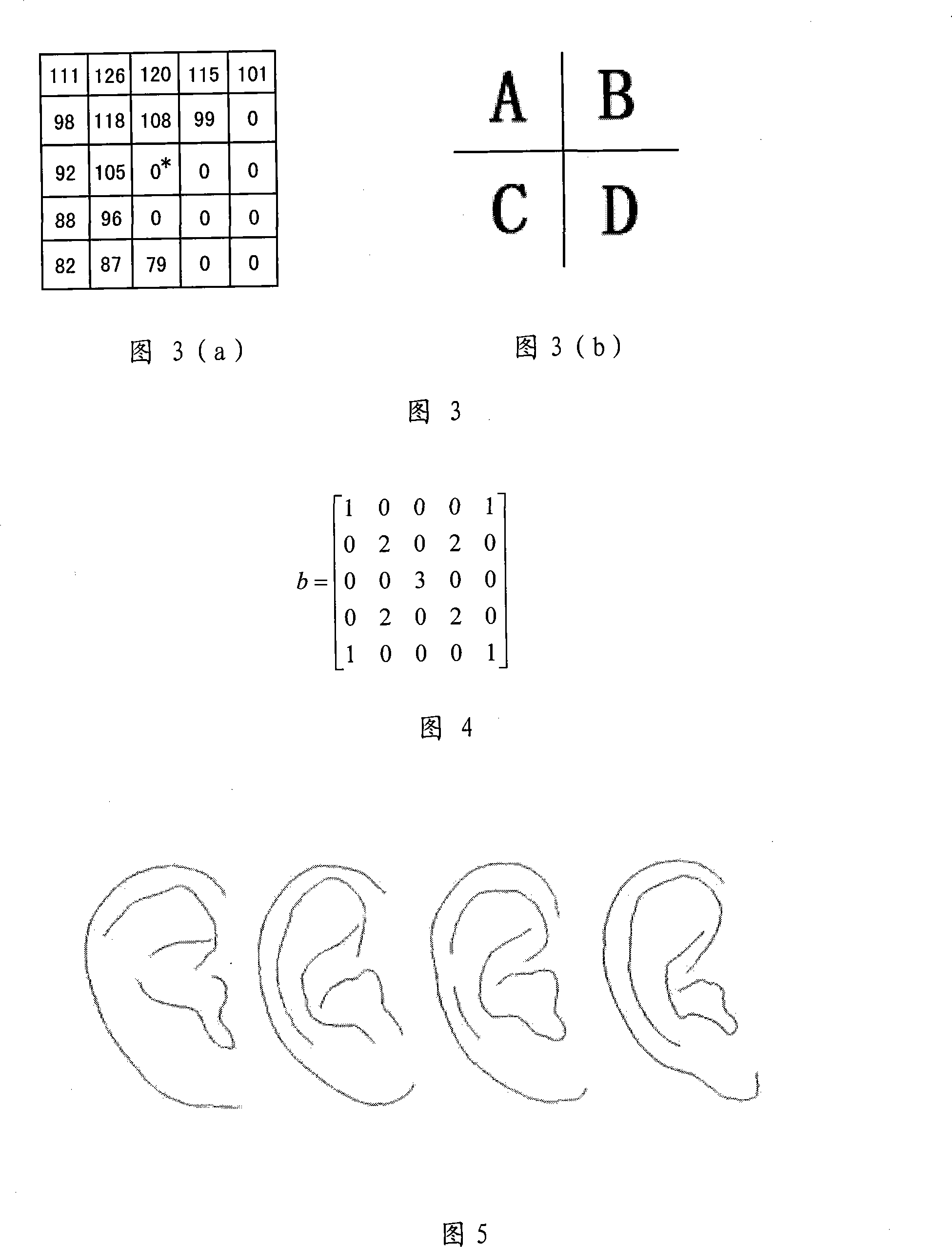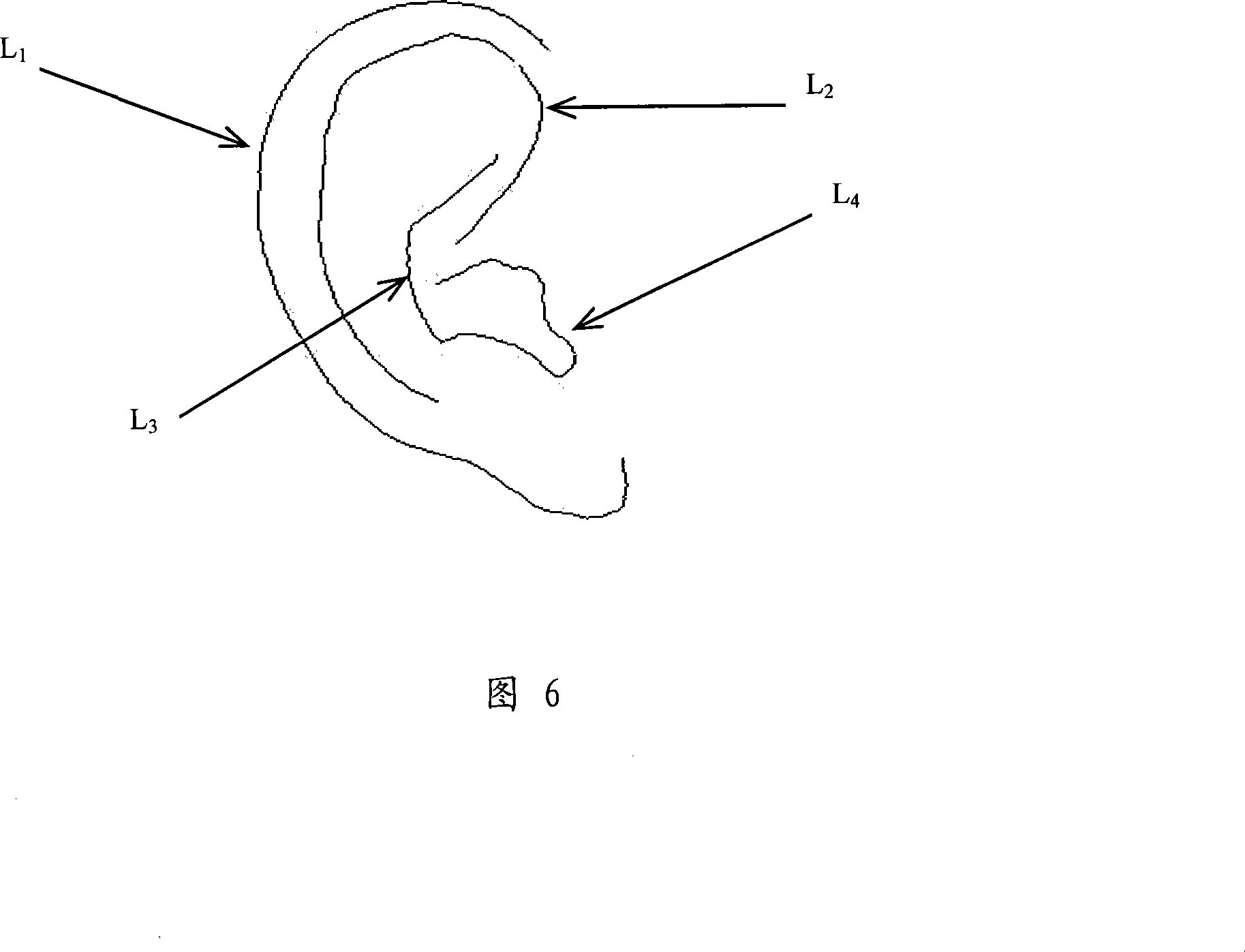Method for extracting and recognizing human ear characteristic by improved Hausdorff distance
A technology of distance and distance measurement, which is applied in the field of identifying human ear features by using improved Hausdorff distance extraction, which can solve the problems of human ear image noise sensitivity, uncertain edge detection, and difficulty in distinguishing edge points from noise points
- Summary
- Abstract
- Description
- Claims
- Application Information
AI Technical Summary
Problems solved by technology
Method used
Image
Examples
Embodiment 1
[0089] Collect 320 right ear images of human ears with a digital camera, and process the 320 human ear images in the human ear image database as follows:
[0090] A. Perform preprocessing operations on all ear images, including denoising, spatial scale normalization, and grayscale normalization. All the ear images are processed into "standard human ear images".
[0091] B. Use the edge detection method based on gray-scale morphological gradient and local threshold segmentation to perform edge extraction on all "standard human ear images", so as to obtain 320 "standard human ear edge images". This is the human ear feature library, which can be A sparse matrix is used to describe the "standard human ear edge image" to reduce the amount of data.
[0092] C. Using SVM as the final data classification method for ear recognition. Select 150 (5 per person) "standard ear edge images" of 30 people from the human ear feature database as the training sample set; and the remaining 90 ...
PUM
 Login to View More
Login to View More Abstract
Description
Claims
Application Information
 Login to View More
Login to View More - R&D
- Intellectual Property
- Life Sciences
- Materials
- Tech Scout
- Unparalleled Data Quality
- Higher Quality Content
- 60% Fewer Hallucinations
Browse by: Latest US Patents, China's latest patents, Technical Efficacy Thesaurus, Application Domain, Technology Topic, Popular Technical Reports.
© 2025 PatSnap. All rights reserved.Legal|Privacy policy|Modern Slavery Act Transparency Statement|Sitemap|About US| Contact US: help@patsnap.com



